Tamron 100-400 mm f/4.5-6.3 Di VC USD
3. Build quality and image stabilization
In the photo below the Tamron 100–400 mm is positioned next to the first version of the Canon with almost the same parameters so the Canon EF 100–400 mm f/4.5–5.6L IS USM.
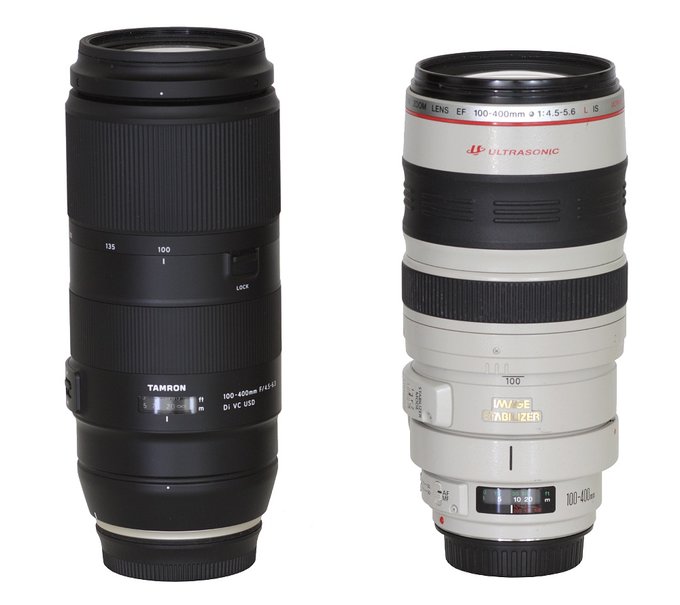 |
Please Support UsIf you enjoy our reviews and articles, and you want us to continue our work please, support our website by donating through PayPal. The funds are going to be used for paying our editorial team, renting servers, and equipping our testing studio; only that way we will be able to continue providing you interesting content for free. |
- - - - - - - - - - - - - - - - - - - - - - - - - - - - - - - - - - - - - - - - - - - - - - - -
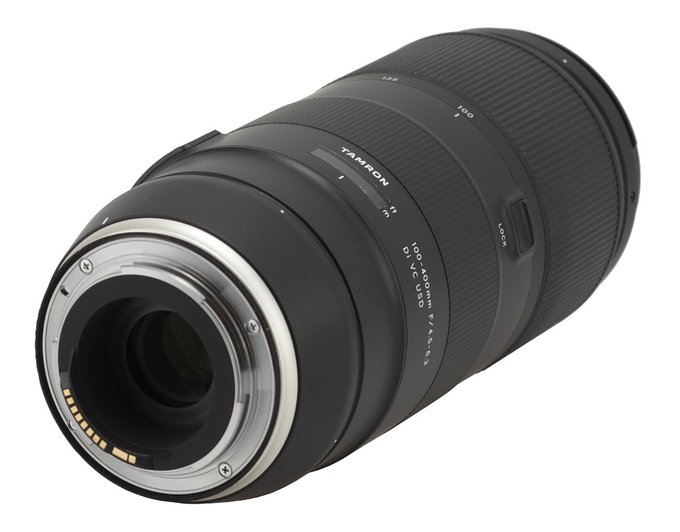 |
The next ring features a distance scale, expressed in meters and feet, which is protected by a pane. On its left (looking from above) you find a focusing mode switch (AF/MF/LIMIT) and a stabilization switch (VC OFF/MODE1/MODE2). Right next to them there is a big inscription “DESIGNED IN JAPAN”, and then, a bit further on, it is written “MADE IN CHINA” and the letters are smaller. Then you see an inscription with the filter diameter, that of 67 mm, and other parameters of the lens.
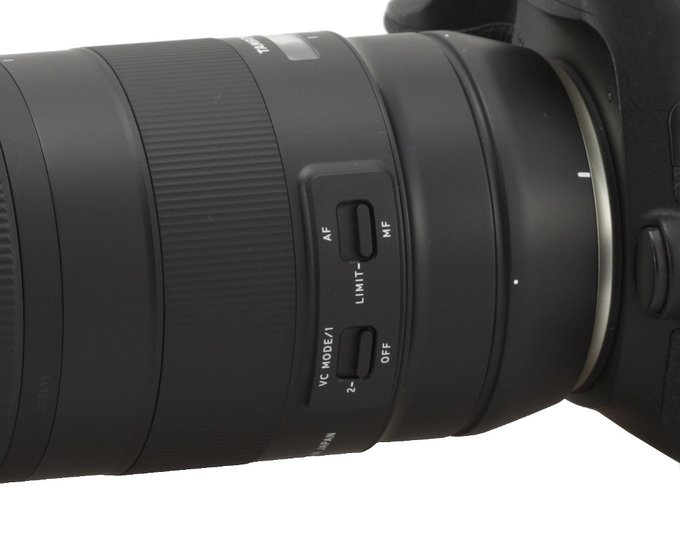 |
Further on, you find a smooth part of the barrel on which there is a LOCK switch which blocks the whole mechanism at 100 mm. We record its presence but we have to add we didn’t have to use it at all during our test. The lens had absolutely no gravity zoom tendency, not even after several sudden movements. The top-notch mechanics of Tamron is obvious at that point.
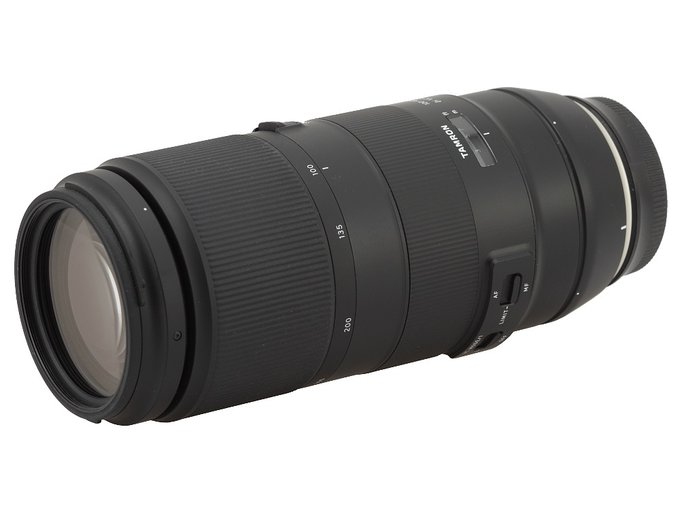 |
The front element is 60 mm in diameter and surrounded by a non-rotating filter thread, 67 mm in diameter, and a hood mount. After passing from 100 to 400 mm the whole front element system extends on a plastic tube and so the length of the lens can be increased by 73 mm.
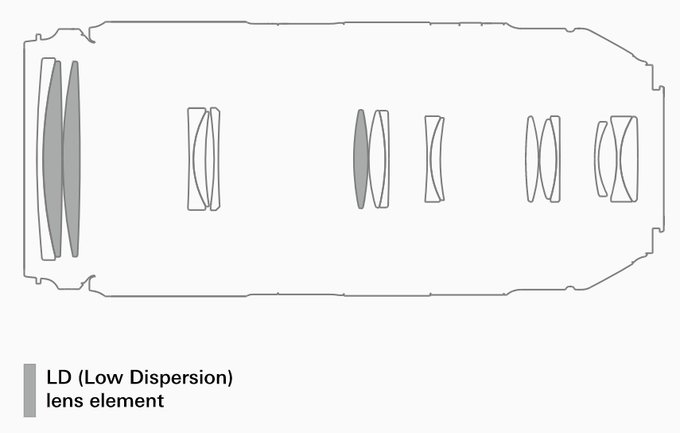 |
Buyers get both caps and a hood in the box. The accessory kit is the same as that of the rival Sigma but a bit modest if you compare it to the accessories of the Canon 100-400 mm II and the Nikkor AF-S 80-400 mm VR. In the case of these two brand name lenses you also get tripod adapters and hard cases.
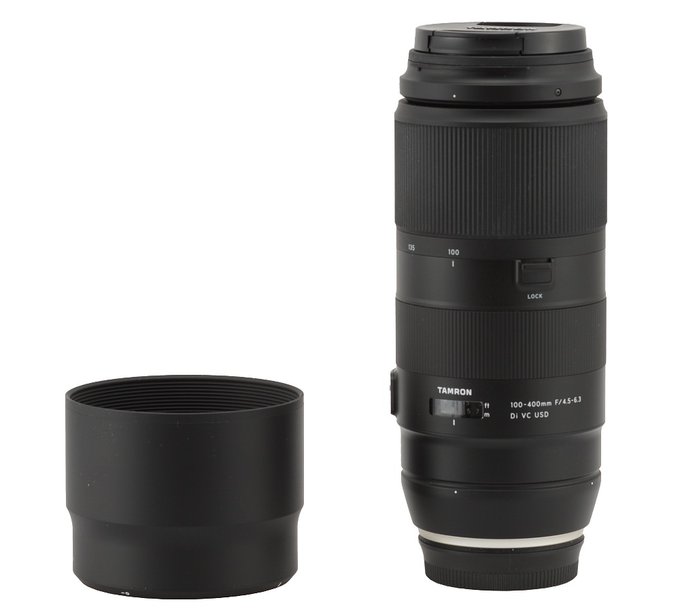 |
Optical stabilization
In order to check how efficient the optical stabilization mechanism is we set the lens at 400 mm and took several dozen photos with exposure times ranging from 1/400 to 1/5 of a second and the stabilization switched on and off. For every set of photos was determined a percentage of out-of-focus shots; then we presented it in a form of a graph of exposure time which was expressed in EV (with 0 EV being an equivalent of 1/320 of a second).
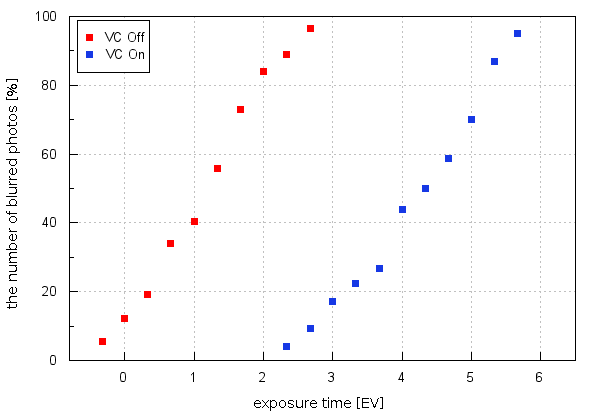
The maximum distance between both curves, measured by us, reaches about 3.5 EV and such is, in our opinion, the real efficiency of the new Tamron’s Vibration Compensation system. It is a good result. Still, we must say the Tamron fares a bit weaker than the Sigma and other brand name rivals in this category. The Sigma 100-400 mm could reach about 3.7-3.8 EV, the result of the Canon EF 100–400 mm f/4.5–5.6L IS II USM was on a level of 4 EV, and the Nikkor AF-S 80–400 mm f/4.5–5.6G ED VR could even get to 4.3–4.5 EV.






